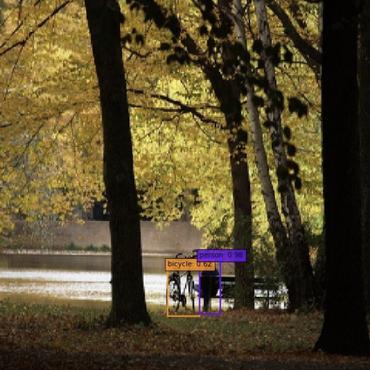Small Object Detection
42 papers with code • 4 benchmarks • 11 datasets
Small Object Detection is a computer vision task that involves detecting and localizing small objects in images or videos. This task is challenging due to the small size and low resolution of the objects, as well as other factors such as occlusion, background clutter, and variations in lighting conditions.
( Image credit: Feature-Fused SSD )
Datasets
Most implemented papers
An Energy and GPU-Computation Efficient Backbone Network for Real-Time Object Detection
As DenseNet conserves intermediate features with diverse receptive fields by aggregating them with dense connection, it shows good performance on the object detection task.
Slicing Aided Hyper Inference and Fine-tuning for Small Object Detection
In this work, an open-source framework called Slicing Aided Hyper Inference (SAHI) is proposed that provides a generic slicing aided inference and fine-tuning pipeline for small object detection.
Augmentation for small object detection
We evaluate different pasting augmentation strategies, and ultimately, we achieve 9. 7\% relative improvement on the instance segmentation and 7. 1\% on the object detection of small objects, compared to the current state of the art method on
Small-Object Detection in Remote Sensing Images with End-to-End Edge-Enhanced GAN and Object Detector Network
Inspired by the success of edge enhanced GAN (EEGAN) and ESRGAN, we apply a new edge-enhanced super-resolution GAN (EESRGAN) to improve the image quality of remote sensing images and use different detector networks in an end-to-end manner where detector loss is backpropagated into the EESRGAN to improve the detection performance.
A Normalized Gaussian Wasserstein Distance for Tiny Object Detection
Our key observation is that Intersection over Union (IoU) based metrics such as IoU itself and its extensions are very sensitive to the location deviation of the tiny objects, and drastically deteriorate the detection performance when used in anchor-based detectors.
Small Object Detection via Pixel Level Balancing With Applications to Blood Cell Detection
This method can perform well with blood cell detection in our experiments.
Real-time gun detection in CCTV: An open problem
This article presents a new dataset obtained from a real CCTV installed in a university and the generation of synthetic images, to which Faster R-CNN was applied using Feature Pyramid Network with ResNet-50 resulting in a weapon detection model able to be used in quasi-real-time CCTV (90 ms of inference time with an NVIDIA GeForce GTX-1080Ti card) improving the state of the art on weapon detection in a two stages training.
Rethinking Rotated Object Detection with Gaussian Wasserstein Distance Loss
Boundary discontinuity and its inconsistency to the final detection metric have been the bottleneck for rotating detection regression loss design.
Occupancy-MAE: Self-supervised Pre-training Large-scale LiDAR Point Clouds with Masked Occupancy Autoencoders
This work proposes a solution to reduce the dependence on labelled 3D training data by leveraging pre-training on large-scale unlabeled outdoor LiDAR point clouds using masked autoencoders (MAE).
Local Contrast and Global Contextual Information Make Infrared Small Object Salient Again
On the other hand, FFC can gain image-level receptive fields and extract global information while preventing small objects from being overwhelmed. Experiments on several public datasets demonstrate that our method significantly outperforms the state-of-the-art ISOS models, and can provide useful guidelines for designing better ISOS deep models.





 DOTA
DOTA
 iSAID
iSAID
 RF100
RF100
 SOD4SB
SOD4SB
 SODA-A
SODA-A
 Aircraft Context Dataset
Aircraft Context Dataset
 SODA-D
SODA-D
 USC-GRAD-STDdb
USC-GRAD-STDdb
 Blood Cell Detection Dataset
Blood Cell Detection Dataset


